Locations | Resources | About | Materials
7. Henry Clay Estate
Materials:
 |
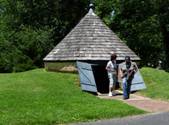 | 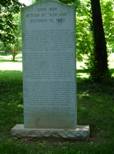 |  |
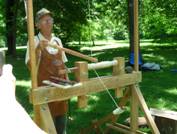 |  | 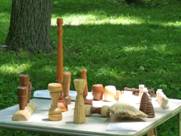 | 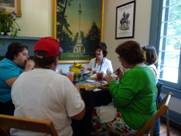 |
About:
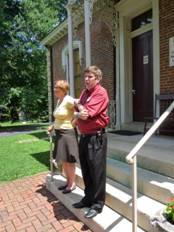
Ashland, The Henry Clay Estate120 Sycamore Road
Lexington, Kentucky 40502
Phone: (859) 266-8581
Fax: (859) 268-7266
http://www.henryclay.org
(the following was taken directly from the Ashland website)
In 1804, Henry Clay began to acquire land for a farm for his young family. He had lived in Lexington since 1799, but by 1804 Clay was ready to move from his town home to a more substantial residence on the outskirts of town. By 1809, the center block of his new home was complete and Clay was residing on the farm he named Ashland for the ash trees abundant on the property. By 1811, Clay desired still more room and received plans to add wings to Ashland from Benjamin Latrobe, architect of the Federal Capitol. Within a year or so, the home was a full five-part Federal structure including a center block, two hyphens (connecting pieces), and two end blocks. Clay and his wife, Lucretia Hart, resided at the home until his death in 1852.
When Clay died his will dictated that Lucretia would have a life estate in the property, but when she left or died, the property would be sold to settle the estate. A short time after Clay’s death, Lucretia moved to her son John’s home, and Ashland was sold to another of her sons, James.
Upon purchase of Ashland, James Clay found the mansion in a state of serious disrepair. He arrived at the difficult conclusion that there was only one thing to be done: raze the house and rebuild. James had the house torn down, taking care to save all materials that could be salvaged. He then rebuilt the home on the existing foundation following his father’s original floor plan. James Clay carefully and thoughtfully rebuilt Ashland as a memorial to his father. James Clay resided at Ashland until 1862 at which time he fled Lexington because of fear of retribution due to his strong Confederate leanings. He first traveled to Cuba then on to Montreal where he remained until his death in 1864, never to return to the memorial he built to his father. In 1866, Ashland was bought by John Bryan Bowman to become part of the new Kentucky University.
Bowman moved to Ashland in 1866 and initially used the home as a residence, but after a time, determined it had more room than he needed. As a result, selected rooms on the first floor were designated for the university’s use as a museum. Unfortunately, by the late 1870s Bowman’s relationship with the University’s Board of Directors had begun to deteriorate and he was fired. He was forced to leave Ashland in 1878. While still owned by Kentucky University, Ashland was rented out until 1882 when it was sold to Henry Clay’s granddaughter, Anne Clay McDowell, and her husband Henry Clay McDowell, who had been named in honor of her famous grandfather. The McDowells returned Ashland to family ownership for the first time in 16 years.
The McDowells immediately engaged in major renovation and restoration. They kept the house largely the same, but made several significant interior alterations to modernize it and bring it into a more popular style. Anne and Henry Clay McDowell resided at Ashland until their deaths. At that time, their oldest child, Nannette, took possession of the home. Nannette McDowell Bullock, her husband Thomas, and son Henry were the last residents of Ashland, and it is through Nannette’s efforts that the Henry Clay Memorial Foundation was created, preserving Henry Clay’s legacy, the house and 17 remaining acres for future generations.
Since 1950, Ashland has been open to the public as a historic house museum. Due to its long and varied history, Ashland may be thought of today as an “onion,” the layers of which can be peeled away to reveal the history of the home and its occupants and, remaining at its core, Henry Clay’s five-part Federal structure and floor plan. To this core have been added son James Clay’s Greek Revival, Italianate, and Victorian flourishes with Eastlake and Aesthetic details added by granddaughter Anne Clay McDowell.
Today, Ashland is a National Historic Landmark and site of profound history. It serves as a place of retreat and comfort for many of its neighbors and thousands of visitors who visit the site each year.
Abraham Lincoln and Henry Clay shared many ideals. Both believed in building the country’s (especially the frontier) infrastructure to enable movement of goods and services to/from markets; this included building and improving roads, bridges, and canals. This also included improved waterways for transportation. Both also believed in opportunities for those who are willing to work: like themselves working from very meager means to prosperity. Both believed in political advocacy and involvement. Although Clay owned slaves, Lincoln worked hard his entire adult life to support and advocate for Henry Clay.
“Henry Clay, my beau ideal of a statesman, the man for whom I fought all my humble life.” — Abraham Lincoln, August 21, 1858
Ashland has a well maintained web site with descriptive information about the buildings and grounds and history of the place. The web site also displays an “object of the month”, featuring an item from the Ashland collection as selected by the Curator. Lunch is offered in a small café (Ginkgo Tree Cafe) for out-of-door dining, or a group can make arrangements for indoor dining. Artisans are frequently present on the grounds of Ashland demonstrating 19th Century skills: see the wood crafter, Ken Brooks, below. The buildings are interesting and well maintained, but the grounds and gardens are lovely. Recent excavations and reconstruction activities surrounding the slave quarters has been undertaken. A visitor gains a geographical sense of the place (use of space over time and the relationship between the physical and human aspects) while walking the grounds.
